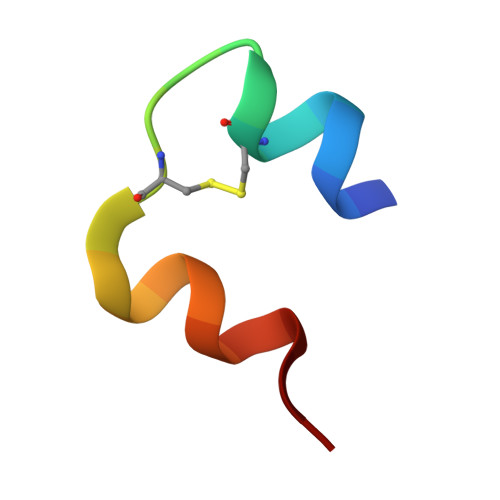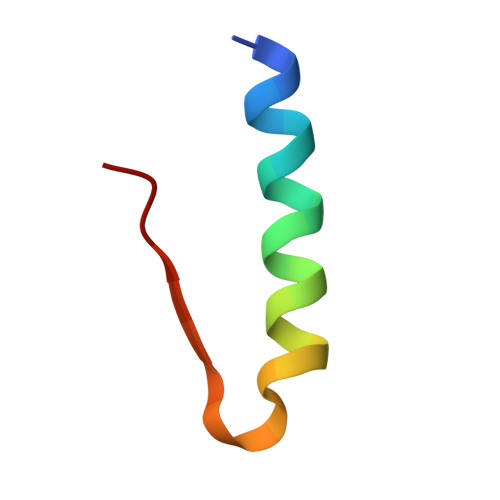Temperature induces a shift from insulin dihexamer to hexamer in collective dynamics.
Ayan, E.(2025) Protein Sci 34: e70245-e70245
- PubMed: 40815299
- DOI: https://doi.org/10.1002/pro.70245
- Primary Citation of Related Structures:
9LVC, 9LVD, 9LVE - PubMed Abstract:
Structures based on x-ray diffraction data collected at 2.3, 2.88, and 2.95 Å resolutions have been determined for long-acting dihexamer insulin at three different temperatures, ranging from 100 to 300 K. It has been observed that the unit-cell parameters of the insulin crystal at 100 K change at 200 K. This change is likely due to the subtle repacking of the rhombohedral insulin crystal and the loss of noncovalent interactions involving myristic acid, which binds two hexamers. Computational analyses indicate that allosteric residues and fatty acid-binding residues of insulin hexamers exhibit reduced collective dynamics and inter-residue coupling, possibly resulting from increased structural fluctuations due to elevated thermal vibrations. This transition has been observed at a characteristic temperature of 200 K, potentially highlighting underlying alterations in the dynamic structure of the fatty acid-solvent interface in the dimer of hexamers. Combined with computational analyses, these findings provide key insights into thermal stability mechanisms, which are crucial for developing thermostable insulin formulations in industrial applications.
- Center for Targeted Therapy Center, Bogazici University, Istanbul, Turkey.
Organizational Affiliation:





















